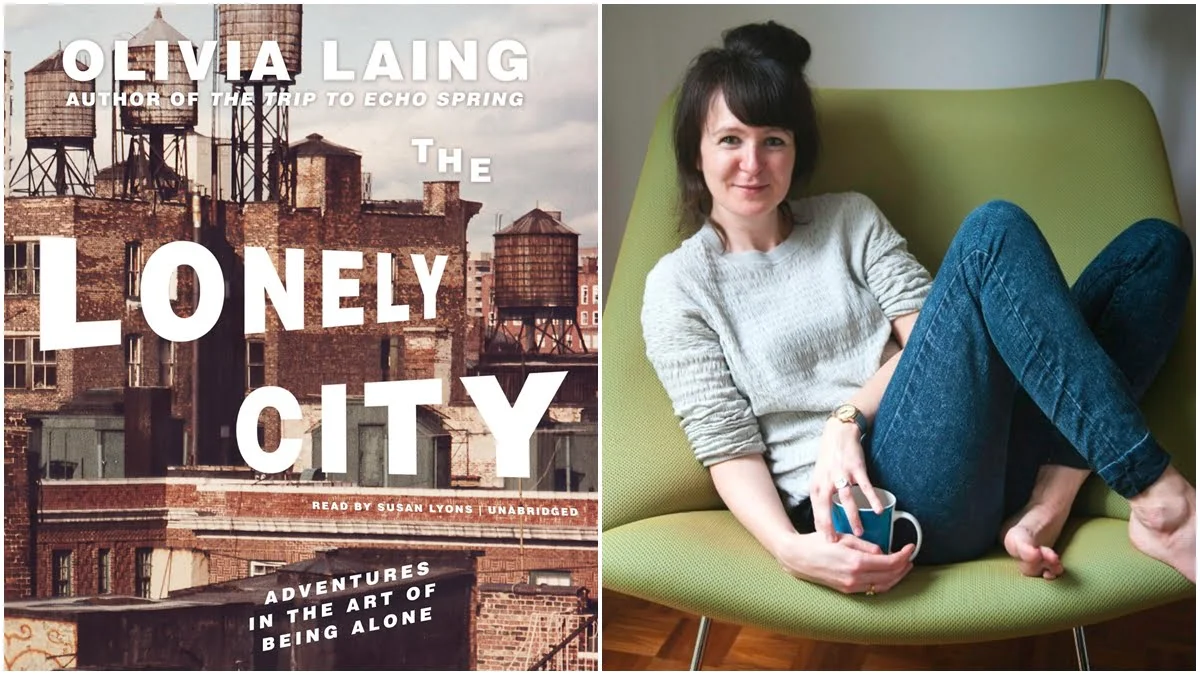I have always believed that there is a force, an unnatural power which ensures that I get my hands on the very literature that I am supposed to be reading according to the nature of events unfolding, both around and within me. ‘The Lonely City’ by Olivia Laing, too, came into my life at a moment when it was the most required.
I make plans to read books, my TBR keeps on expanding every day. I hardly get any chance to tick off the titles which I passionately note down as I am too busy reading books that I manage to find in my parent’s trunks, my cousin’s bookshelves or a local stationery which manages to keep a handful of classic literature each time I visit.
Also read: Book Review: The Gurkha’s Daughter By Prajwal Parajuly
I came across The Lonely City when my favorite bookstore in Delhi recommended it on its Instagram handle when some stranger asked ‘what to read when you are feeling lonely?’ And then I found another stranger, sitting one seat away from me in the bus when I was traveling back to my parent’s house, was engrossed in it like it was some kind of mystical enchantment.
The short weekend visit to my parents’ expanded intosix months of being away from a home that I made for myself two years ago. I miss my friends, my room, the kind of loneliness that was pleasant amidst the chaos of Delhi, the hot Delhi winds in the month of April and the humidity that comes with monsoon in June. In my quarantine loneliness, I craved to be in Delhi. The Lonely City exposed, explained and kept me company through all that I was about to experience in the coming days.
I read The Lonely City slowly, looking for words that would resonate, spent a few moments with them, wrote them down in my journal before eventually moving ahead. As far as I remember, I have been a fast reader especially if unoccupied with academic and professional deadlines. The imposition of the lockdown took away all of my preoccupation for a little while but the confusion, chaos, dread and despair caught hold of my attention which made my progress with The Lonely City slow. I was enjoying what Laing had to say and grieving over the global tragedy all at the same time.
A lot of the text of The Lonely City talks about their gender, sexuality and personal relationships with their partners and arts fraternity which gets reflected in the art pieces. It talks about Edward Hopper, Andy Warhol, David Wojnarowicz, Henry Darger, Klaus Nomi, Josh Harris and their relationships, sexual and material, with themselves and the space they inhabited.
Few moments of respite were brought by Laing’s beautifully crafted prose which intertwined art, artists and the inherently human feeling of loneliness. A lot of the text talks about their gender, sexuality and personal relationships with their partners and arts fraternity which gets reflected in the art pieces. It talks about Edward Hopper, Andy Warhol, David Wojnarowicz, Henry Darger, Klaus Nomi, Josh Harris and their relationships, sexual and material, with themselves and the space they inhabited. Laing weaves her personal story of abandonment and loneliness with those of these artists and makes every reader realize how unique yet alarmingly similar all of the loneliness in this world are.
The fluidity with which the text moves between a memoir, biography and essays is remarkable. It binds art, creativity, expression, emotions, memory, social marginalisation and rebellion together in a fine weave. The gentle prose of The Lonely City speaks to you as if crafted specifically for you. It discreetly points out the problematic structures that generate the sense of isolation in community and in individuals. The heteronormativity, patriarchy and monogamy. It talks about failed relationships with others and the self.
The Lonely City talks about how individual emotions are generated within a structure and how loneliness is one of them. The text is divided into seven chapters investigating different aspects of life and loneliness seeping into our individual and social selves. It also deals with language, technology, surveillance, childhood trauma, parental abuse, sexual abuse with their relation to the art produced by the artists.

The text of The Lonely City begins with Laing claiming loneliness to be a city, whoever inhabits it, tends to get lost. The 1942 oil canvas painting, Nighthawk, by Edward Hopper tends to grasp the loneliness that people inhibit while living in crowded urban spaces. At one instance Hopper himself clarifies “Unconsciously, probably, I was painting the loneliness of a large city.”
Laing follows this up with her observation in The Lonely City, wondering: “Didn’t he paint loneliness as a large city, revealing it as a shared, democratic space, inhabited, whether willingly or not, by many souls?”
On language and loneliness in The Lonely City, Laing takes up two names, Andy Warhol and Valarie Solonas, both suffering from loneliness, very different from one another but navigating the city through a common medium of language.

Warhol took hiding behind machines and Valarie Solonas attempted a homicide and grew quiet, both of them lost the ability to form relationships when language failed to communicate their thoughts.
David Wojnarowicz, an artist who took illustration, paintings, photography, music, film and books to counter the emotional turmoil of loneliness found homogeneity isolating. His work was an open rebellion to the said homogeneity. His art, words, photographs and illustrations are testimony to poverty, parental abuse, sexual abuse, gender abuse and psychological trauma that caused the loneliness.
The Lonely City discusses the life and loneliness of Klaus Nomi, an immigrant, a gay, a gender non-conforming person, who went through a similar experience which came out through their music.
The Lonely City discusses the life and loneliness of Klaus Nomi, an immigrant, a gay, a gender non-conforming person, who went through a similar experience which came out through their music. The Opera of New York City, limited to elite and conservative audiences, eventually saw their career escalating to heights but not without constant alienation that they went through. Being an outsider, appearing alien was their way of approaching things so that they could break the said norms.
Their interviews and music never fails to give away the fact that they were in pain, physical and emotional both, which exacerbated after contracting HIV-AIDS. The stereotype and vilification that gay community experienced, deepened the loneliness or populated the lonely city.
Also read: Book Review: Isolocation – An Anthology Of Poems On COVID-19 Resulted In

The Lonely City delves into how Warhol dealt with this alienation in a particularly different manner, upon finding that his former lover John Gould had died of AIDS, he distanced himself from death so much that he didn’t attend his mother’s funeral.
When the alienation of the gay community spread, the loneliness they experienced as a result, wrecked the community more than the disease would. To protect oneself, to protect their beloved, to protect their identity and to simultaneously fight against social exclusion is a tiresome task, a very lonely one. This loneliness is unique, how people fight it, how people embrace it, how people produce art within loneliness is different, regardless, the feeling stems from a single factor of institutionalised marginalization.
Art, an expression becomes both an escape, a meditation and way of expression without establishing a direct connection with a crowd which has been systematically designed/conditioned to reject loners. These loners are connected to each other through their art, a city in which all of them live and something similar to a language appears in these creations which is shared between them.
Reading The Lonely City is a meditation, activism and learning in itself. It speaks volumes in simple sentences about individual selves, art, artists and the life lived by them. Art isn’t a cure, Laing explains, and obviously not a solution to the problems it generates from. The Lonely City becomes an art but not a solution or any radical theory newly introduced in the arena of psychology, sociology or history about loneliness. Rather, The Lonely City is an art weaving trauma, identity, structures and social experience in sentences that soothes your scars if you are an artist or a loner, or both.
Saumya Khatri is a third year undergraduate exploring Internet, history, gender, food and social activism together. A writer, often reluctant with her ideas, finds herself expressing every now and then on various platforms on the internet. She can be found on Instagram




